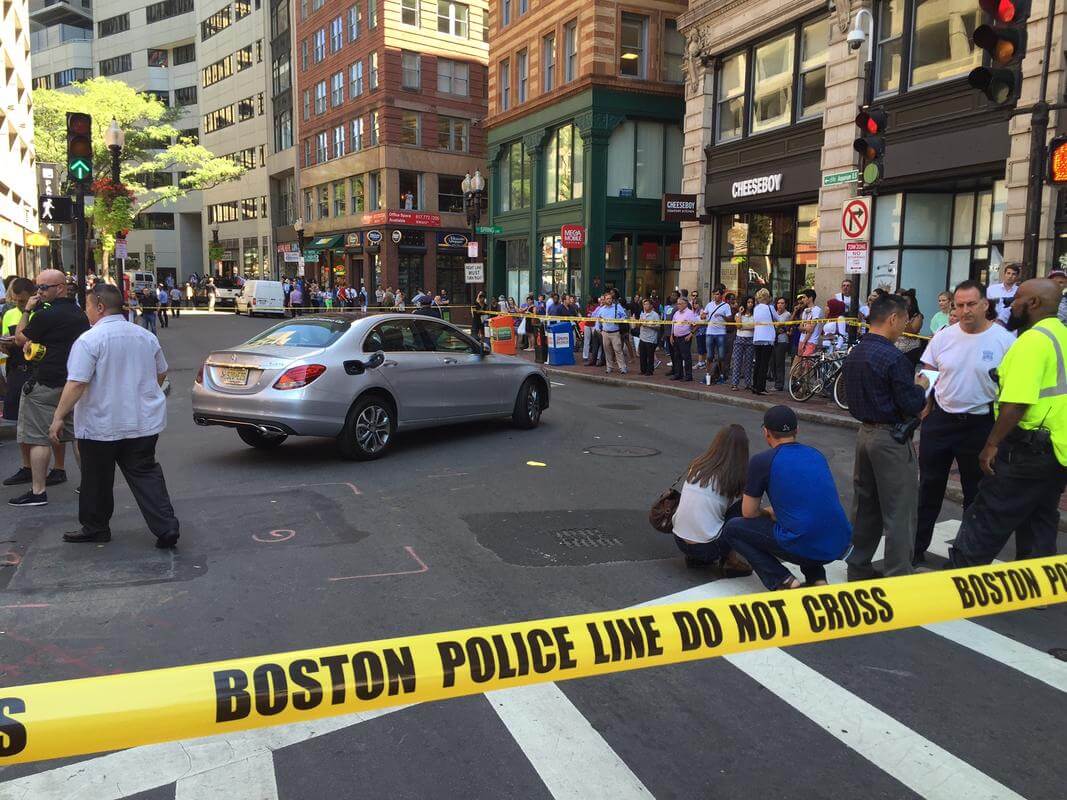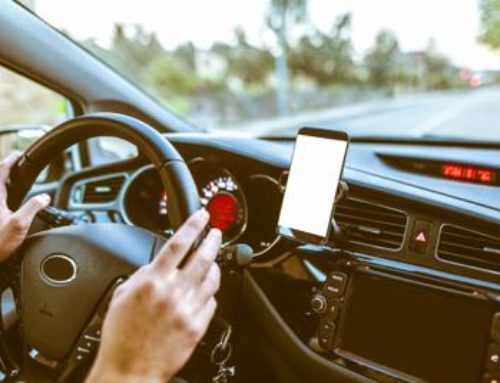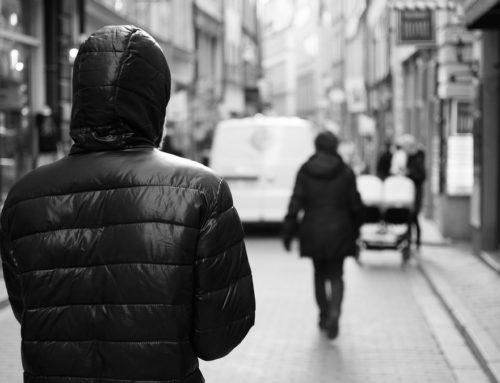Boston is a beautiful and very walkable city. In fact, Walk Score ranked Boston the third most walkable city in America for 2016. Pretty awesome for pedestrians cruising around our city streets.
The list was based on factors like available walking routes; pedestrian friendliness; number of nearby amenities and proximity to those resources; city population; and neighborhood boundaries. Walk Score analyzed data from 2,500 U.S. cities to create the 50 most walkable list, with Boston taking one of the top slots! Boston’s overall Walk Score came in at 80.1, behind New York’s 89 and San Francisco’s 86.
Have you ever seen the mobs of people flooding out of South Station in the morning on the way to work? Have you ever been in gridlock pedestrian traffic on the sidewalks of Newbury Street on a warm, sunny day? Pedestrians are everywhere!
The North End is rated best neighborhood for pedestrians with a walkability score of 99.6. The South End, Fenway, Back Bay and Beacon Hill placed second through fifth, on the walkability ratings.
We’re lucky to have areas such as the Esplanade, The Commonwealth Mall, The Greenway and the Harborwalk. These areas are quite safe and easy to take the city on by foot. But, don’t forget about the mazes of one-way streets, illogical traffic patterns and Boston drivers (you know what kind of level of crazy driving we’re talking about:). We’re guessing maybe these factors likely dragged down our pedestrian friendliness score?!
With a high population of pedestrians, along with the warmer weather and outdoor activities increasing, it’s important to remember to be safe. Unfortunately, no matter the precautions you take as a pedestrian, you may be involved in an accident. Pedestrians—people who travel by foot, wheelchair, stroller, etc.—are among the most vulnerable users of the road. Today’s drivers are more distracted than ever, and they may not be vigilant in looking out for walkers and runners.
The Centers for Disease Control (CDC) reports that, in 2013, a total of 4,735 pedestrians were killed in traffic deaths and more than 156,000 were treated in emergency departments for nonfatal injuries. In the next 24 hours, on average, 430 people will be treated in an emergency department for traffic-related pedestrian injuries. In the next 2 hours, on average, one pedestrian will die from injuries in a traffic crash. With numbers like these, it’s vital to understand the risks and learn how to stay safe.
If you have been involved in a pedestrian accident, please contact the skilled personal injury attorneys and staff at Schulze Law. We are equipped to handle the individuality of each and every personal injury case we represent and offer compassionate, clear counseling and assistance. We are there for victims and their families when they need support the most.
Who’s at risk of?
According to the CDC, pedestrians of all ages are at risk of injury or death from traffic crashes, but some people are at higher risk.
– Male pedestrians are more likely to die or be injured in a motor vehicle crash than females.
– Teen and young adult (ages 15-29 years) pedestrians are more likely to be treated in emergency departments for crash-related injuries compared to any other age group.
– The rate of pedestrian death generally increases with age.
– In 2013, 34% of all pedestrians killed in traffic crashes had a blood alcohol concentration of greater than or equal to 0.08.
– As pedestrians, children are at even greater risk of injury or death from traffic crashes due to their small size, inability to judge distances and speeds, and lack of experience with traffic rules.
– One in five traffic deaths among children ages 14 and under are pedestrian deaths.
Wow, these statistics are staggering. With Boston’s Transportation Department recently announcing its plan to take the top place as the most walkable city by 2030, it seems fitting to review ways to stay safe when stepping out on the streets. The Go Boston 2030 report outlines exactly how the city plans to address growing problems of traffic congestion, public transportation access and pedestrian-safety. One of the biggest goals is to increase pedestrian traffic.
While Massachusetts law generally favors the rights of pedestrians over vehicles, all parties must follow the rules of the road and exercise reasonable care. If a pedestrian is injured by a vehicle or property defect, they may recover damages for the injuries suffered if someone else’s negligence caused or contributed to the incident. What is negligence? Negligence is the failure to do (or not do) something that a reasonable person in a similar situation would, to protect others from foreseeable risks.
According to the National Conference of State Legislatures (NCSL), vehicles must yield the right-of-way to pedestrians within a marked crosswalk that are upon the half of the roadway upon which the vehicle is traveling, or when a pedestrian is approaching within ten feet of where the vehicle is traveling. Vehicles may not enter a marked crosswalk when a pedestrian is crossing until there is sufficient space to accommodate the vehicle beyond the crosswalk.
Pedestrians must cross a roadway within a marked crosswalk when there is an officer directing traffic, a traffic control signal, or a marked crosswalk within 300 feet of the pedestrian. Pedestrians may not suddenly leave the curb and enter a crosswalk into the path of a moving vehicle that is so close the vehicle is unable to yield. Pedestrians crossing a roadway in an urban area outside of a marked crosswalk must yield the right-of-way to all vehicles upon the roadway. It is unlawful for any person to actuate a pedestrian control signal or to enter a marked crosswalk unless a crossing of the roadway is intended.
Driver’s Duty of Care
Generally, drivers must exercise reasonable care under the circumstances. Failure to do so is considered negligence. A few of the most common factors contributing to driver negligence are:
- Distracted driving
- Speeding or failing to yield
- Disobeying traffic signs or signals
- Failing to signal while turning
- Not paying attention to weather or traffic conditions
- Being under the influence of drugs or alcohol
Pedestrian’s Duty of Care
A pedestrian must exercise reasonable care for their own safety. A few of the most common factors contributing to pedestrian negligence are:
- Ignoring the “walk” signal at an intersection
- Entering oncoming traffic
- Failing to use marked crosswalks
- Darting out in front of a vehicle
What Can I Do To Avoid Being Hit By A Car? (Avoiding all of the above is a good place to start!)
- Pay Attention!
This is probably the safest and simplest way to avoid an accident or injury. With so many distractions, it’s easy to let your guard down. From cell phones, to advertisements, weather disturbances, loud noises, to an attractive person walking by – there are millions of things vying for your attention. It only takes a second for an accident to happen so please be aware of your surroundings. Don’t assume that drivers are paying attention and therefore you don’t have to. There are tons of distracted and negligent drivers on the roads. Everyone has a duty and obligation to be careful, alert and aware. *Tip: don’t wear headphones. If you can’t hear what’s happening around you, you’re putting yourself in harm’s way.
- Use Sidewalks & Crosswalks
Sidewalks and crosswalks are there to provide a safety zone for pedestrians. Hit up sidewalks whenever possible. If a sidewalk is not available, walk on the far side of the road facing traffic for greatest visibility. Use crosswalks when crossing the street. If a crosswalk is unavailable, find the most well-lit spot on the road to cross and wait for a long enough gap in traffic to make it safely across the street. Make sure you look left, right, and left again before crossing a street, and keep watching as you cross. Avoid walking along highways or other roadways where pedestrians are prohibited.
- Follow Traffic Laws
Although obeying traffic laws may seem trivial at times, it can save a life. Traffic laws are methods to protect you and prevent harmful situations. Most of us were taught the basics in childhood and the rules still remain. Even though most laws have been taught since childhood, it is still important to remember the basics. Jaywalking, avoiding crosswalks and ignoring traffic laws and signals can all increase your risk of being hit by a car. Play by the rules, people.
- Don’t Walk Impaired
Don’t walk alone if you have been drinking or doing drugs. These substances impair your judgment and dull your senses. According to the National Highway Traffic Safety Administration, alcohol involvement was reported – for the driver or the pedestrian – in nearly half of the crashes that resulted in pedestrian fatalities. Call an Uber or taxi, a friend, or a family member to give you a ride or walk you to your destination.
- Be Extra Careful At Night
According to The CDC, most pedestrian deaths occur in urban areas, non-intersection locations, and at night. Avoid wearing dark clothing and don’t assume drivers can see you. Instead, opt for wearing retro-reflective outdoor clothing, shoes, or lights to make yourself more visible.
If You’re Involved in a Pedestrian Accident
Pedestrian accident can be scary and potentially life changing. If you’ve been involved in a pedestrian accident, we recommend the following steps:
- Call the police or 911 immediately
- Call The Team at Schulze Law
- Don’t leave the scene of the accident
- Gather names and phone numbers of any witnesses and try to get photographs
- Don’t make any statements to anyone, including drivers and insurer
- Get medical help and follow up care, if necessary
Pedestrian accidents and injuries can be serious and complex. Our team can help you. When death is not the result, severe and debilitating injury often is. After all, it is hard to imagine that in a battle between pedestrian and truck—or car or motorcycle— that a pedestrian could win. Thus, significant financial losses to the individuals and families involved are possible and likely.
It is our goal that you are fairly compensated for any injuries you have sustained. We understand the intricacies personal injury law, and we have the experience, expertise and resources to help our clients.
Share the road and be safe!
CALL NOW: 857-300-5300 Emergency After Hours Number: 800-894-9267 XLAW1 (5291)
Resources:
https://www.walkscore.com/
https://www.cdc.gov/features/pedestriansafety/
http://www.ncsl.org/






